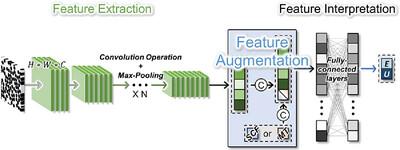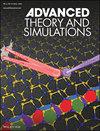通过策略输入特征增强增强单向复合材料横向行为的预测性能和推广
IF 2.9
4区 工程技术
Q1 MULTIDISCIPLINARY SCIENCES
引用次数: 0
摘要
本研究提出了一种有效的方法来分析受体积分数(VF)和纤维排列影响的单向复合材料截面上的复杂断裂模式,并预测相应的横向力学响应。传统的有限元分析在评估每种结构的响应时,计算成本很高。为了解决这个问题,已经应用了深度学习(DL),特别是卷积神经网络(cnn),但这些方法通常集中在有限的VF空间上,导致大量数据需求和新配置的预测精度降低。在这项研究中,引入了一种新的深度学习方法,通过集成低成本、物理上有洞察力的辅助特征作为多模态输入,可以有效地扩展到更广泛的VF空间。具体而言,选取Mori-Tanaka (MT)特征和应力集中因子(SCF)作为辅助输入,并将其纳入常规CNN模型进行对比分析。结果表明,结合MT特征的模型在未见的VF空间中显著提高了外推性能,同时随着训练数据集大小的增加保持了稳健的预测性能。相比之下,SCF特性并没有显示出类似的好处。这些发现表明,将MT特征等高级特征集成到DL模型中可以为预测材料特性提供更有效和通用的解决方案。本文章由计算机程序翻译,如有差异,请以英文原文为准。

Enhancing Prediction Performance and Generalizing for Transverse Behavior of Unidirectional Composites via Strategic Input Feature Augmentation
This study proposes an efficient method for analyzing complex fracture patterns in the cross-sections of unidirectional (UD) composites, influenced by the volume fraction (VF) and fiber arrangement, and for predicting the corresponding transverse mechanical responses. Traditional finite element (FE) analysis incurs high computational costs when evaluating responses for every configuration. To address this, deep learning (DL), particularly convolutional neural networks (CNNs), have been applied, but these approaches have typically focused on limited VF spaces, leading to large data requirements and reduced prediction accuracy for new configurations. In this research, a novel DL approach is introduced that can be effectively extended to broader VF spaces by integrating low-cost, physically insightful auxiliary features as multi-modal inputs. Specifically, the Mori–Tanaka (MT) feature and stress concentration factor (SCF) are selected as auxiliary inputs and incorporated them into the conventional CNN model for comparative analysis. The results showed that the model incorporating the MT feature significantly improved extrapolation performance in unseen VF spaces while maintaining robust predictive performance as the training dataset size increased. In contrast, the SCF feature does not demonstrate similar benefits. These findings illustrate that integrating advanced features like the MT feature into the DL model can offer more effective and versatile solutions for predicting material properties.
求助全文
通过发布文献求助,成功后即可免费获取论文全文。
去求助
来源期刊

Advanced Theory and Simulations
Multidisciplinary-Multidisciplinary
CiteScore
5.50
自引率
3.00%
发文量
221
期刊介绍:
Advanced Theory and Simulations is an interdisciplinary, international, English-language journal that publishes high-quality scientific results focusing on the development and application of theoretical methods, modeling and simulation approaches in all natural science and medicine areas, including:
materials, chemistry, condensed matter physics
engineering, energy
life science, biology, medicine
atmospheric/environmental science, climate science
planetary science, astronomy, cosmology
method development, numerical methods, statistics
 求助内容:
求助内容: 应助结果提醒方式:
应助结果提醒方式:


